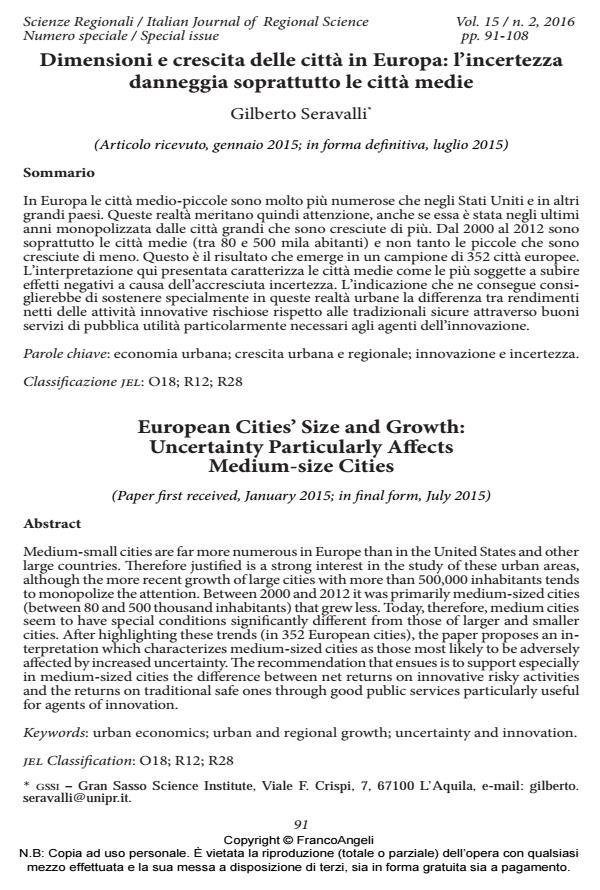Dimensioni e crescita delle città in Europa: l’incertezza danneggia soprattutto le città medie
Titolo Rivista SCIENZE REGIONALI
Autori/Curatori Gilberto Seravalli
Anno di pubblicazione 2016 Fascicolo 2016/2
Lingua Italiano Numero pagine 18 P. 91-108 Dimensione file 284 KB
DOI 10.3280/SCRE2016-002005
Il DOI è il codice a barre della proprietà intellettuale: per saperne di più
clicca qui
Qui sotto puoi vedere in anteprima la prima pagina di questo articolo.
Se questo articolo ti interessa, lo puoi acquistare (e scaricare in formato pdf) seguendo le facili indicazioni per acquistare il download credit. Acquista Download Credits per scaricare questo Articolo in formato PDF

FrancoAngeli è membro della Publishers International Linking Association, Inc (PILA)associazione indipendente e non profit per facilitare (attraverso i servizi tecnologici implementati da CrossRef.org) l’accesso degli studiosi ai contenuti digitali nelle pubblicazioni professionali e scientifiche
In Europa le città medio-piccole sono molto più numerose che negli Stati Uniti e in altri grandi paesi. Queste realtà meritano quindi attenzione, anche se essa è stata negli ultimi anni monopolizzata dalle città grandi che sono cresciute di più. Dal 2000 al 2012 sono soprattutto le città medie (tra 80 e 500 mila abitanti) e non tanto le piccole che sono cresciute di meno. Questo è il risultato che emerge in un campione di 352 città europee. L’interpretazione qui presentata caratterizza le città medie come le più soggette a subire effetti negativi a causa dell’accresciuta incertezza. L’indicazione che ne consegue consiglierebbe di sostenere specialmente in queste realtà urbane la differenza tra rendimenti netti delle attività innovative rischiose rispetto alle tradizionali sicure attraverso buoni servizi di pubblica utilità particolarmente necessari agli agenti dell’innovazione.
Parole chiave:Economia urbana; crescita urbana e regionale; innovazione e incertezza.
Jel codes:O18; R12; R28
Gilberto Seravalli, Dimensioni e crescita delle città in Europa: l’incertezza danneggia soprattutto le città medie in "SCIENZE REGIONALI " 2/2016, pp 91-108, DOI: 10.3280/SCRE2016-002005